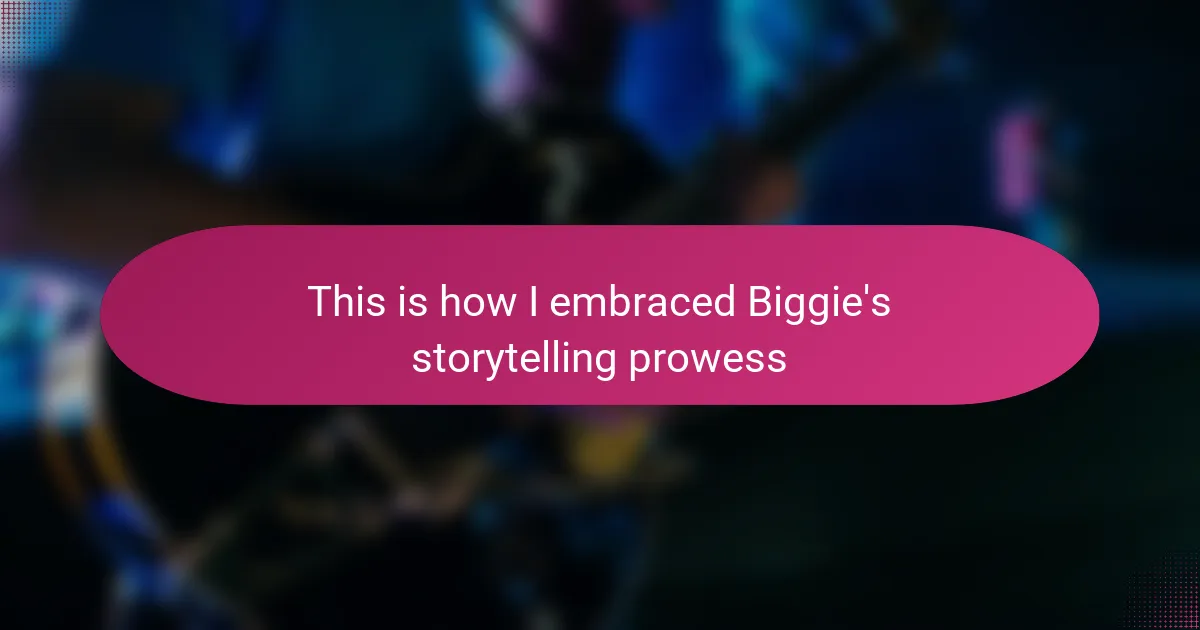Key takeaways
- Rap storytelling is powerful through detailed imagery and relatable emotions, allowing listeners to connect deeply with the artist’s experiences.
- Biggie’s narrative style is marked by a blend of gritty realism and poetic elegance, using vivid details and effective flow to enhance his storytelling.
- Key techniques for effective rap storytelling include embracing honesty, using specific imagery, and experimenting with pacing to create dynamic narratives.
- Personal experiences and vulnerability can significantly enhance the emotional impact of rap, making stories resonate with the audience long after the music ends.
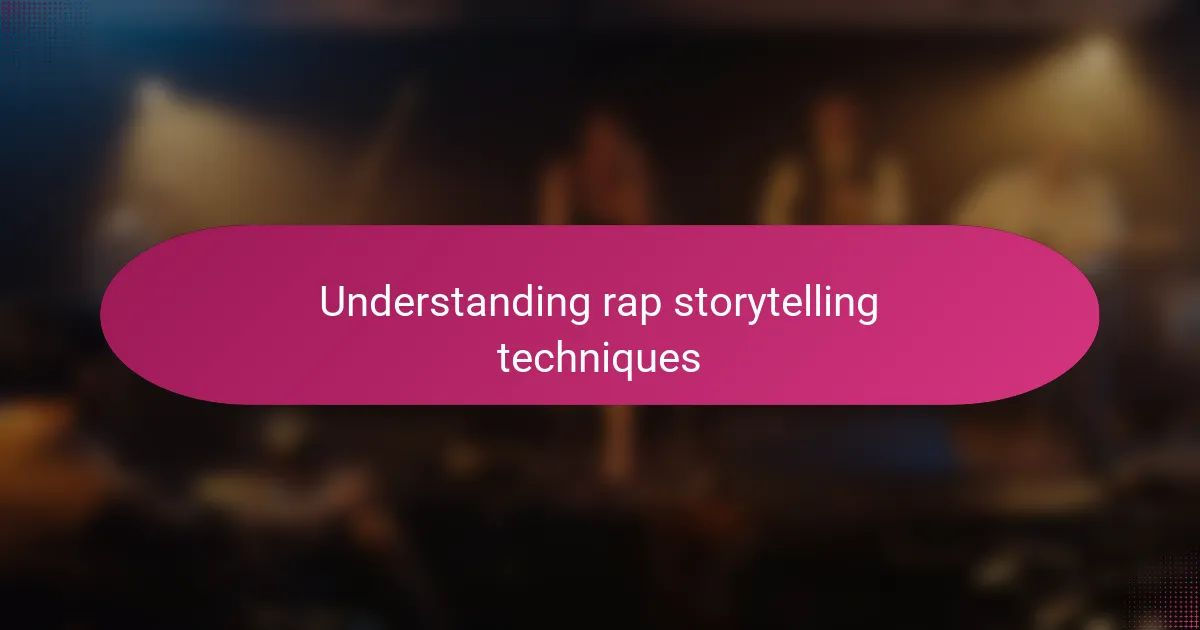
Understanding rap storytelling techniques
When I first dove into rap storytelling, I realized it’s more than just rhymes and beats; it’s about painting vivid pictures with words. What struck me was how rappers use detailed imagery and relatable emotions to pull listeners into their world—it’s like being handed a front-row seat to someone’s life story. Have you noticed how a single lyric can evoke a memory or feeling you didn’t expect? That’s the power of storytelling in rap.
Another technique that caught my attention is the use of narrative flow. It’s fascinating how rappers like Biggie structure their verses to build suspense and deliver punchlines that hit harder because of the story’s progression. Personally, I found myself rewinding tracks to catch subtleties I missed the first time, appreciating how every line contributes to the bigger picture.
I also admire how vulnerability plays a crucial role in effective rap storytelling. It takes courage to share struggles and triumphs so openly, and that honesty creates a deep connection with the audience. I often think about how this openness invites empathy—reminding me that behind the fame and skill lies a human experience we can all relate to.
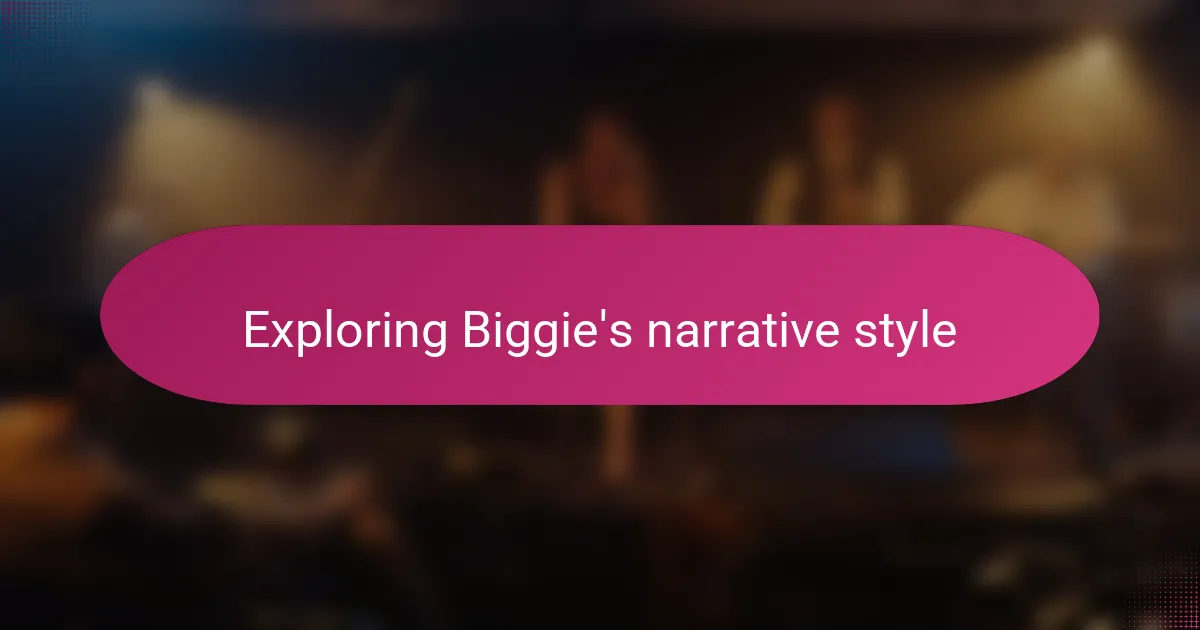
Exploring Biggie’s narrative style
Biggie’s narrative style feels like a masterclass in storytelling. The way he balances gritty realism with poetic elegance makes every story feel authentic yet larger than life. I remember the first time I truly listened to “Juicy,” and it hit me how he didn’t just rap about success; he painted the struggle, the hope, and the triumph in a way that felt deeply personal.
What sets him apart, I think, is his use of detail—those small, vivid images that transport you straight into his world. Have you ever noticed how a simple mention of a neighborhood or an everyday moment suddenly carries so much weight in his verses? It’s like you’re walking those streets with him, feeling the tension and the dreams all at once.
Biggie’s flow also deserves praise because it’s more than rhythm; it’s a storytelling vehicle. His pacing and the way he switches from smooth to sharp delivery create a sense of urgency and intimacy simultaneously. I found myself listening not just for the beat but for the subtle shifts in his tone that reveal twists in the narrative, making each listen a fresh experience.
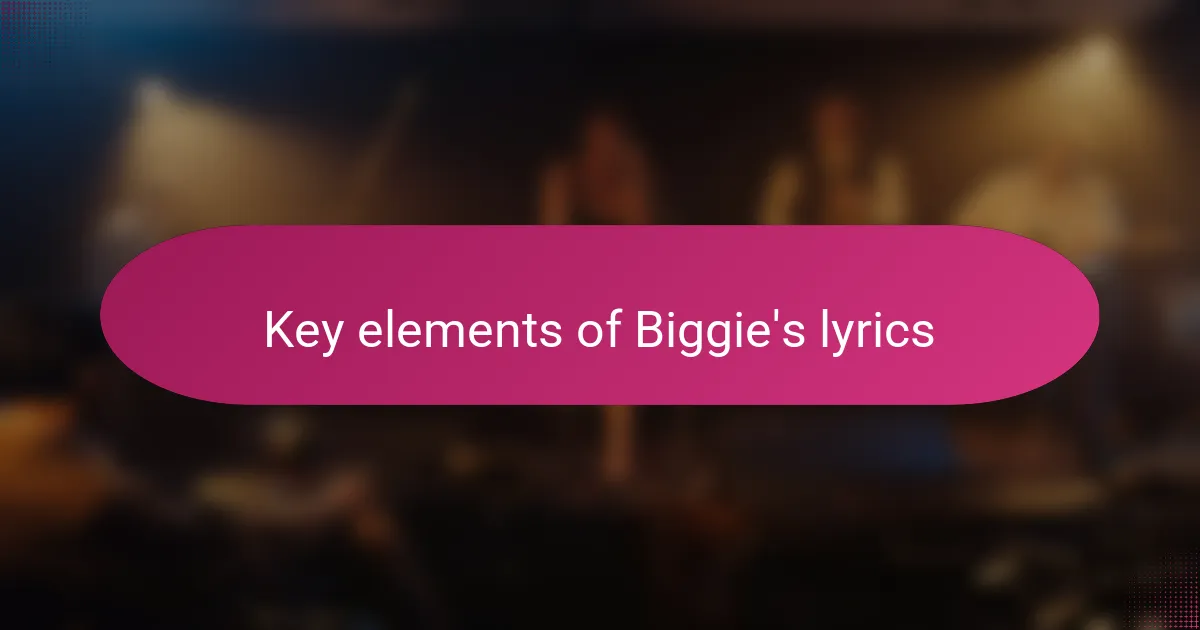
Key elements of Biggie’s lyrics
One thing I’ve always admired about Biggie’s lyrics is his knack for painting pictures with words. His use of vivid imagery isn’t just decorative—it pulls you right into his world. I remember listening to “Everyday Struggle” and feeling like I was walking those tough streets alongside him, sensing every challenge he described with such raw clarity.
Another key element is his clever wordplay and metaphors. Biggie had this way of turning a simple line into something layered and rich, making you pause and think twice. Have you caught those moments where a punchline hits you harder because there’s more meaning beneath the surface? That’s no accident; it’s a skill he honed to perfection.
And then there’s his storytelling rhythm—his flow almost feels like a conversation. It’s neither rushed nor dragged out; it invites you in, building suspense and emotion naturally. From my point of view, that pacing is what turns his lyrics from mere verses into unforgettable stories that stay with you long after the track ends.
![]()
Analyzing iconic Biggie stories
When I dug into Biggie’s most iconic stories, like “Ready to Die” or “Suicidal Thoughts,” I was struck by how effortlessly he wove complex emotions into street tales. Have you ever felt pulled into a story so deeply that it sticks with you days later? That’s exactly what his storytelling does—it lingers, haunting in the best way.
What really got me thinking was how Biggie balanced darkness with moments of levity. In “Ten Crack Commandments,” for example, he outlines the harsh rules of the street with a rhythm so sharp, it felt like I was learning survival tips firsthand. It’s that mix of brutally honest lessons and compelling narration that made his stories unforgettable to me.
Also, I can’t help but marvel at his ability to turn personal tragedy into universal experiences. Listening to “Suicidal Thoughts,” I remember how raw and vulnerable his voice sounded—almost like he was confessing secrets rather than performing a track. That level of openness is rare, and it’s what made me realize storytelling in rap isn’t just talent; it’s an act of courage.
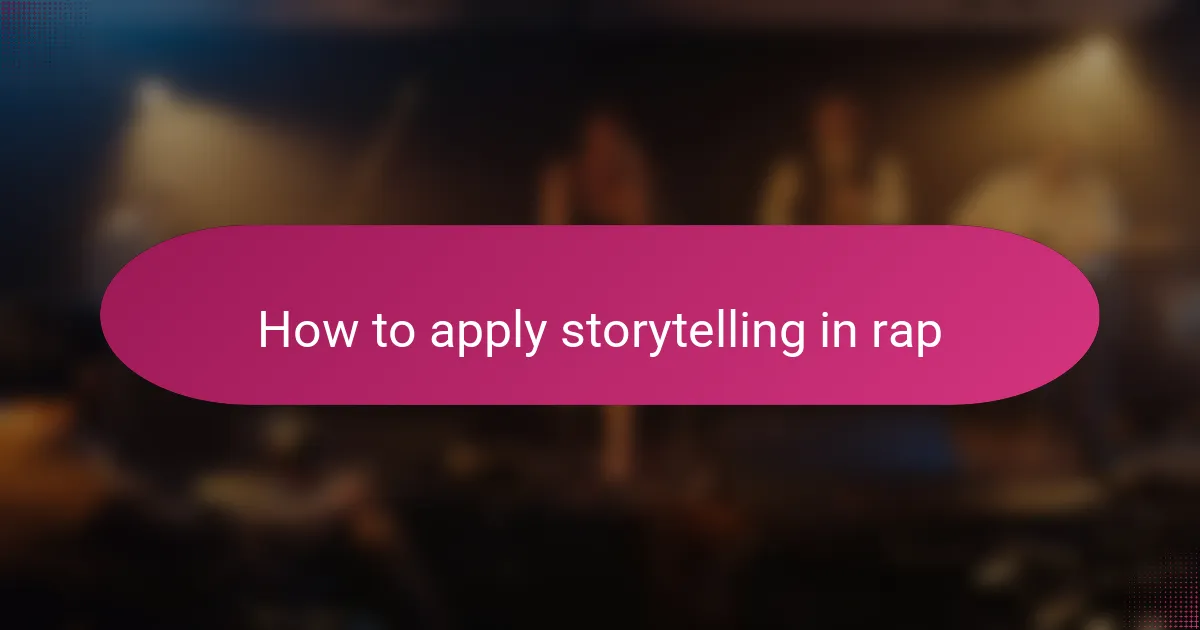
How to apply storytelling in rap
Applying storytelling in rap starts with embracing honesty. I’ve found that when you tap into real emotions and experiences, your lyrics naturally resonate more deeply. Have you ever noticed how the most memorable verses often come from moments of vulnerability? Sharing your truth creates a connection that goes beyond just clever wordplay.
Another trick I learned is to focus on specific, relatable details. Instead of broad statements, paint scenes with concrete images—like a cracked sidewalk or a late-night conversation—that draw listeners into your world. When I first tried this, it transformed my writing; suddenly, people could see and feel the story I was telling, not just hear it.
Finally, pacing is everything. I’ve experimented with how I deliver my verses, slowing down to build suspense or speeding up to heighten intensity, much like Biggie did. This rhythm guides the listener through the narrative, making each story feel dynamic and real. Have you ever felt a song grip you simply because of its flow? That’s the magic of storytelling in rap brought to life.
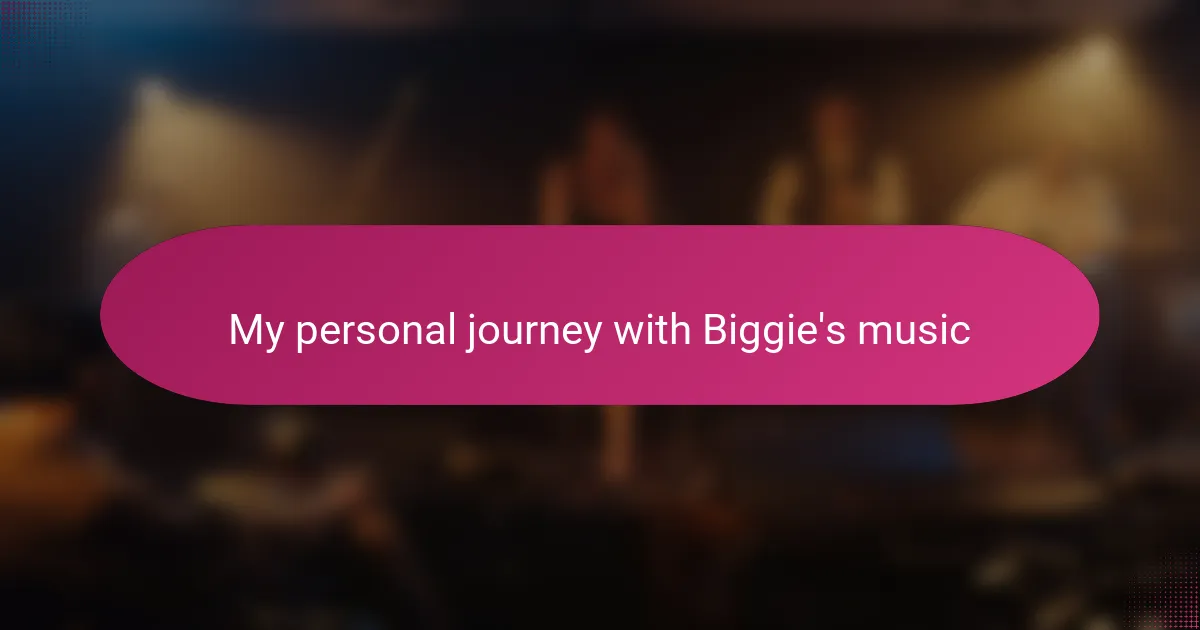
My personal journey with Biggie’s music
Biggie’s music entered my life during a time when I was craving stories that felt both raw and real. I remember late nights spent with headphones on, getting lost in his tracks and realizing that his storytelling wasn’t just clever bars—it was an invitation into his world. Have you ever had a song play that suddenly made your own struggles feel understood? That’s exactly what happened to me with Biggie.
There was this one moment listening to “Juicy” where I felt a wave of inspiration wash over me. It wasn’t just about his rise to fame but the vulnerability in admitting where he came from—the doubts, the hustle, the dreams. That kind of honesty made me rethink what storytelling in rap could do, beyond entertainment, to something truly transformative.
Over time, I found myself noticing how Biggie’s stories stuck with me long after the music stopped. I’d catch phrases echoing in my mind, prompting me to reflect on my own experiences. Isn’t it amazing how certain lyrics can become a soundtrack for your personal journey? For me, that’s the hallmark of a great storyteller—and Biggie, without a doubt, mastered that art.
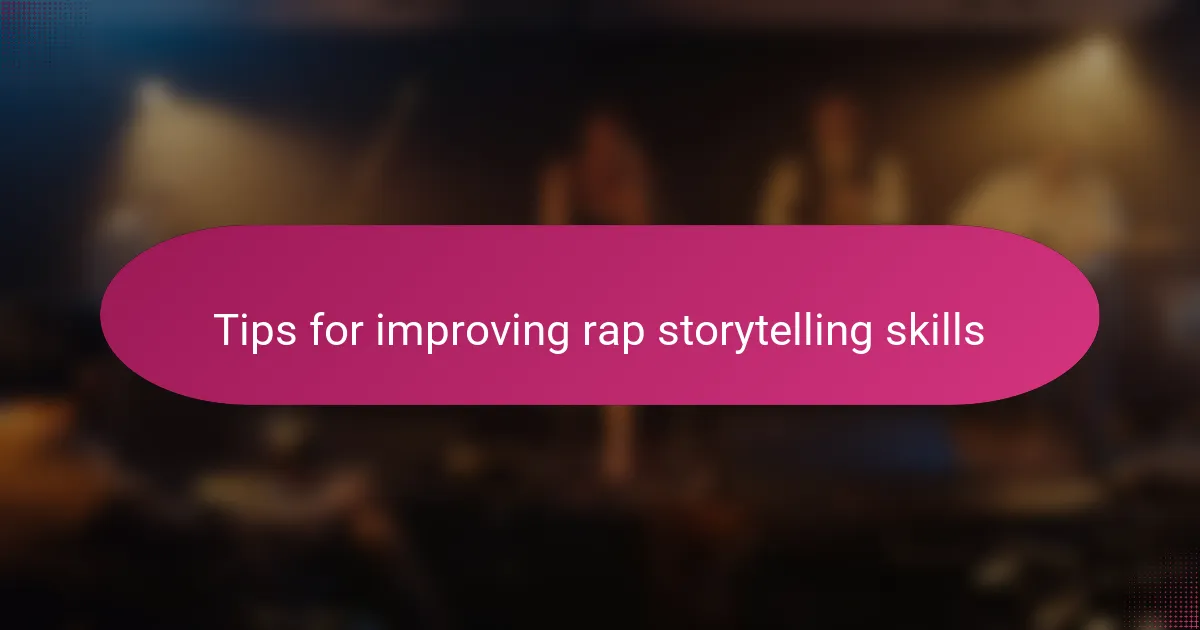
Tips for improving rap storytelling skills
One of the biggest steps I took in improving my rap storytelling was simply listening deeply and repeatedly to artists like Biggie. Have you ever found that replaying a track multiple times reveals layers you missed the first round? It’s in those moments that I started noticing how details and emotions are woven so carefully, teaching me the value of subtlety in storytelling.
I also realized that practicing vivid imagery changed everything for me. Instead of just saying what happened, I tried to paint scenes with words—like describing the flicker of a streetlamp or the tension in a heated argument. This shift made my stories more immersive, and I noticed my audience connecting more, which was a big motivation to keep refining that skill.
Lastly, pacing became a game-changer in my rap writing. Playing around with the speed of my delivery helped me build suspense or emphasize emotion in the story. Have you ever been caught off guard by a sudden change in flow that makes a lyric hit harder? That’s the kind of effect I strive for, turning my verses into experiences, not just rhymes.
